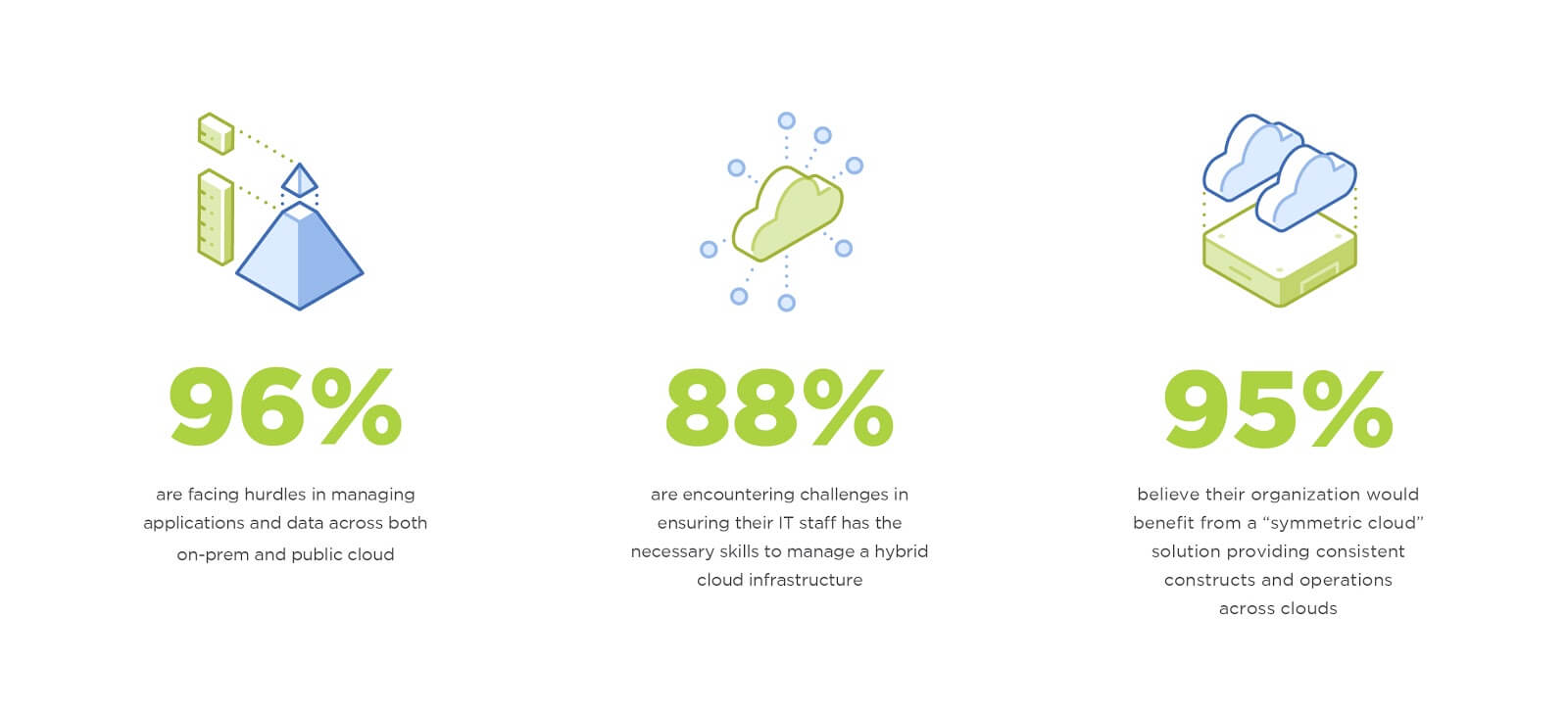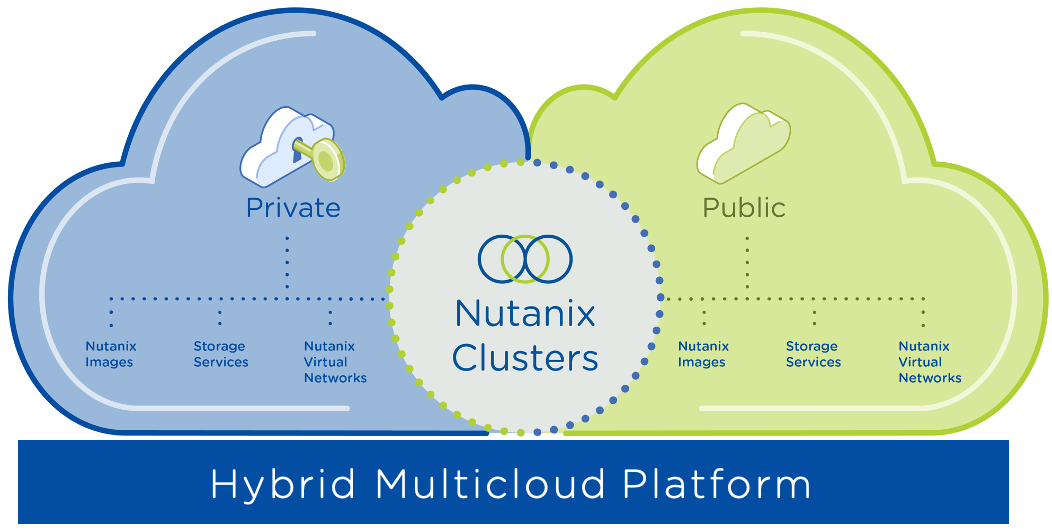Since Nutanix’s founding in 2009, we have prided ourselves on staying in tune with the needs of IT decision-makers. As cloud infrastructure models have evolved, we’ve helped our customers modernize IT infrastructure to enable their digital initiatives and achieve business goals.
In our most recent Enterprise Cloud Index Report, the key takeaway was that IT decision-makers see hybrid cloud as the ideal model to enable flexibility and business agility, something we know is even more important now in the age of COVID-19. But we also learned that adoption is lagging. To better understand the key challenges and opportunities businesses face with hybrid cloud adoption, we decided to dig deeper in a new Hybrid Cloud Report surveying IT decision makers globally. Here are some of the key findings:

Public cloud alone is not always the answer
Nearly all respondents (95%) think that their organization would benefit from a solution allowing consistent IT constructs and operations across public and private clouds. But the report showed that many struggle to adopt it – with nearly three-fourths (70%) of organizations reporting their transformation is taking longer than originally planned. While many saw public cloud as the answer to their digital initiatives, most found that moving business-critical applications to public cloud is easier said than done, sometimes impossible. About three-fourths of respondents noted that the need to re-architect or re-platform applications (75%) and the complexity of migration (71%) are top concerns preventing organizations from making the jump from private to public cloud.
The race to find the right IT talent is tightening
Finding qualified IT talent is already difficult for many businesses, and finding IT talent that has the appropriate skills to manage both private and public cloud infrastructure is even more challenging. The majority of respondents (88%) noted that their organization struggles to ensure their IT team has the appropriate skills to handle a hybrid cloud environment, and over half (53%) see this as their main concern.
Silos can impact the bottom line
Nearly all respondents (95%) noted that they have to rely on different teams with distinct skill sets in order to manage public and private cloud infrastructure - which creates silos. These silos can impact the bottom line, and nearly half of respondents cited resource sprawl (49%), an increase in costs (45%), and a waste of resources (43%) as top concerns. In the current climate, where many businesses are focused on optimizing resources, these concerns are exacerbated.
What’s next?
It’s clear that businesses are facing challenges when managing private and public cloud environments, but this trend is not going to change. According to Gartner, by 2021, 90% of organizations will have deployed a multicloud or hybrid cloud model for their IT needs. And the need for flexibility in the age of COVID is only going to accelerate this transition.
So where does it leave businesses facing these challenges?
Ultimately, businesses want the flexibility to leverage the right tools - and clouds - for their business. More and more businesses are realizing that a unified hybrid cloud environment - one providing consistent experience, tooling, and operational practices across private and multiple public clouds - can break down silos and reduce operational inefficiencies. This can help businesses fast track digital initiatives by providing a path to easily “lift and shift” legacy applications to public cloud without costly re-architecting exercises. Those legacy applications will then also have direct access to cloud native technologies. And true hybrid cloud also provides business with the ability to very quickly scale workload capacity by bursting into the public cloud, or to use the cloud as a backup site for disaster recovery.

The Nutanix hybrid cloud solution, based on industry leading hyperconverged Infrastructure technology, provides unified management of infrastructure and applications across public and private clouds. The key capabilities behind this hybrid cloud are enabled by Nutanix Clusters, an exciting new offering by Nutanix that is currently in early access, which natively extends our HCI software to public cloud. Nutanix Clusters enables seamless mobility of applications without expensive retooling or re-architecting when migrating them to public clouds.
To read more about the findings, you can access the full report here.
© 2020 Nutanix, Inc. All rights reserved. Nutanix, the Nutanix logo and the other Nutanix products and features mentioned on this post are registered trademarks or trademarks of Nutanix, Inc. in the United States and other countries. All other brand names mentioned on this post are for identification purposes only and may be the trademarks of their respective holder(s). This post may contain links to external websites that are not part of Nutanix.com. Nutanix does not control these sites and disclaims all responsibility for the content or accuracy of any external site. Our decision to link to an external site should not be considered an endorsement of any content on such a site. Certain information contained in this post may relate to or be based on studies, publications, surveys and other data obtained from third-party sources and our own internal estimates and research. While we believe these third-party studies, publications, surveys and other data are reliable as of the date hereof, they have not independently verified, and we make no representation as to the adequacy, fairness, accuracy, or completeness of any information obtained from third-party sources.
This post may contain express and implied forward-looking statements, which are not historical facts and are instead based on our current expectations, estimates and beliefs. The accuracy of such statements involves risks and uncertainties and depends upon future events, including those that may be beyond our control, and actual results may differ materially and adversely from those anticipated or implied by such statements. Any forward-looking statements included in this post speak only as of the date hereof and, except as required by law, we assume no obligation to update or otherwise revise any of such forward-looking statements to reflect subsequent events or circumstances.